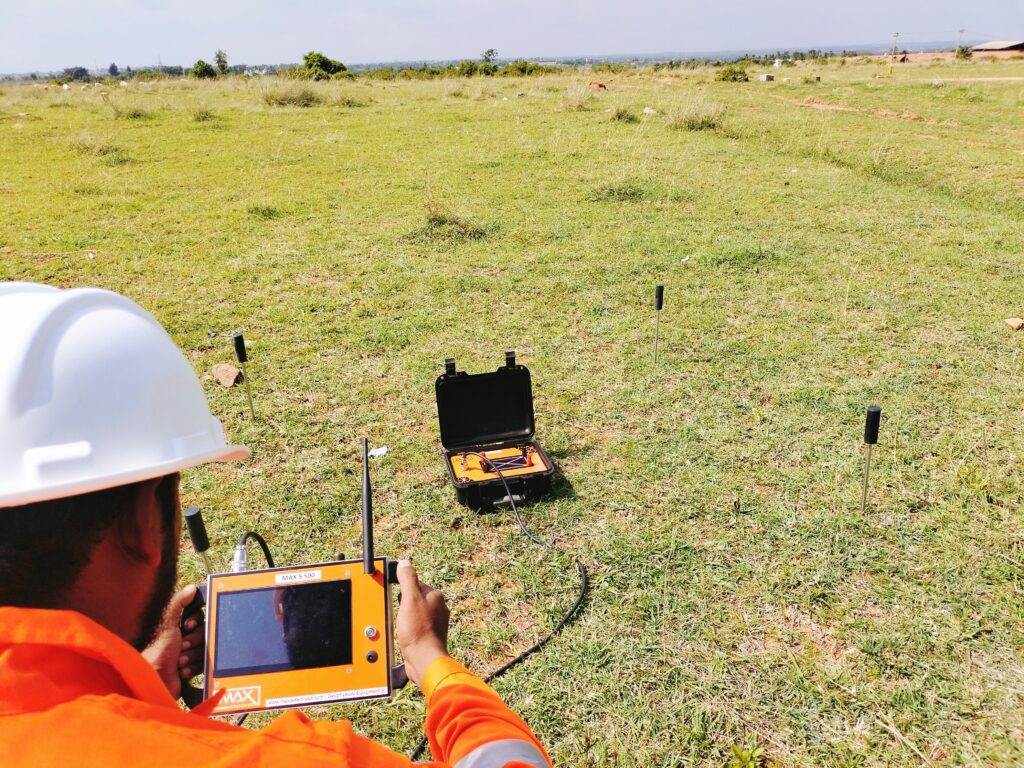Although profiling helps in locating the suitable zone for drilling by measuring the resistance of each segment by conducting a continuous profile survey, characterization of subsurface layers by estimating its capacitance to study the lithological characters to exactly map the sequence of vertical changes to study the depth to reach the actual target is important in drilling investments.
The ADS IP system works on frequency-based capacitance measuring technique for a single station doppler effect by 4 probing technique which transmits and measures the threshold of the effective layer and the differences in capacitance helps in estimation of the medium of deposits.
Capacitance is the ratio of the amount of electric charge stored on a conductor to a difference in electric potential. There are two closely related notions of capacitance: self-capacitance and mutual capacitance.[1]: 237–238 Any object that can be electrically charged exhibits self-capacitance. In this case the electric potential difference is measured between the object and ground. A material with a large self-capacitance holds more electric charge at a given potential difference than one with low capacitance. The notion of mutual capacitance is particularly important for understanding the operations of the capacitor, one of the three elementary linear electronic components (along with resistors and inductors). In a typical capacitor, two conductors are used to separate electric charge, with one conductor being positively charged and the other negatively charged, but the system having a total charge of zero. The ratio in this case is the magnitude of the electric charge on either conductor and the potential difference is that measured between the two conductors.
As the electrically charged capacitance in measurement of subsurface lithology involves more time and space for electrode spacing the frequency-based ADS IP system was designed to decrease the complexity in measuring the capacitance by checking the frequency variations

